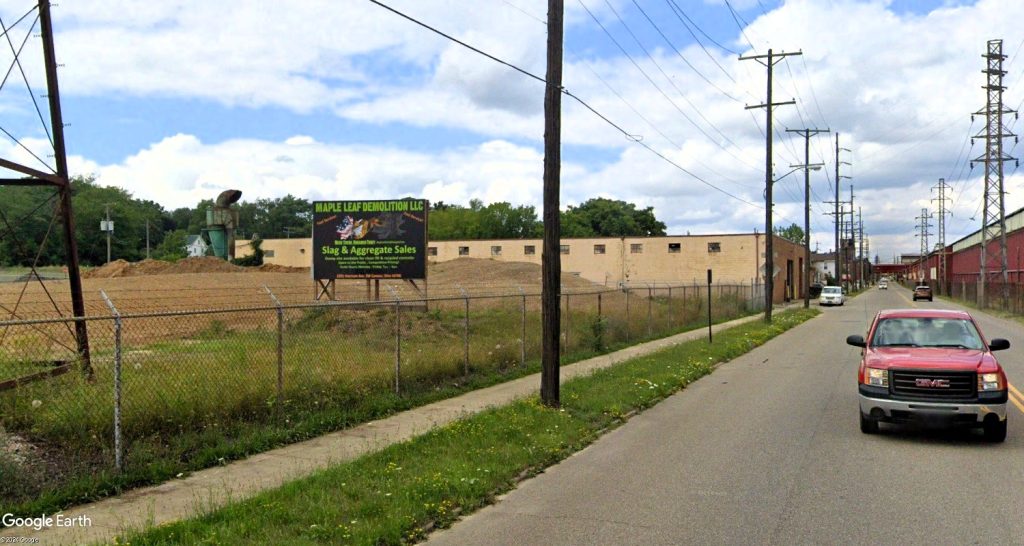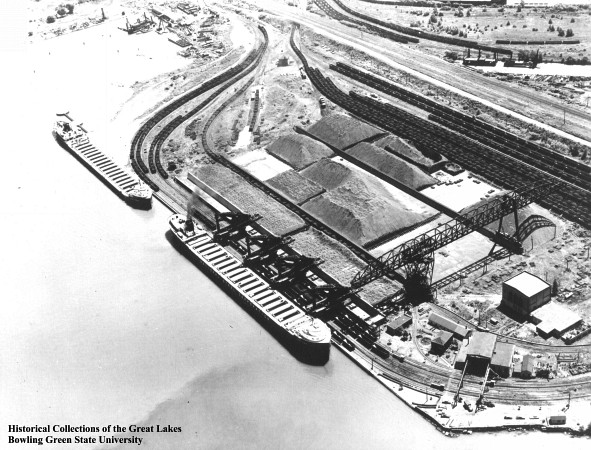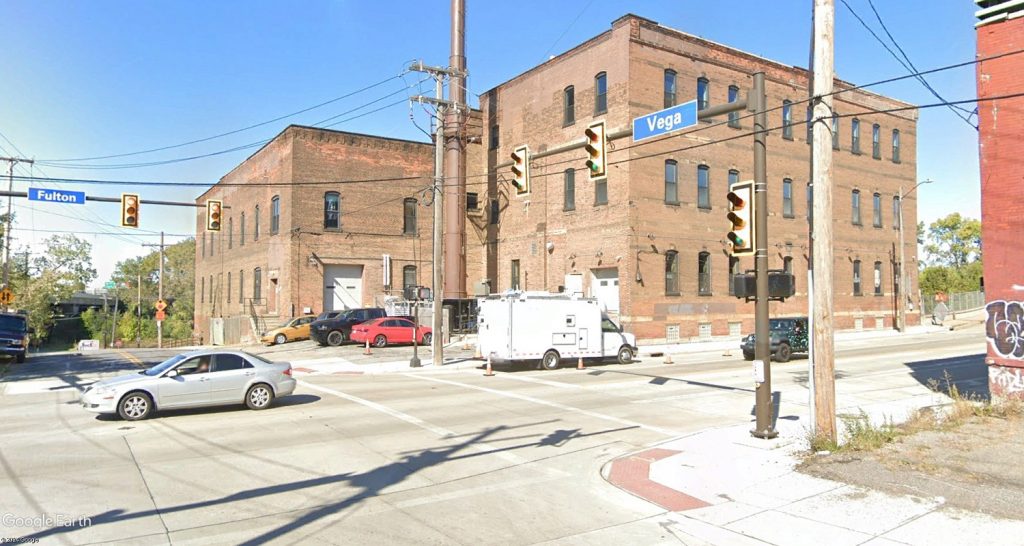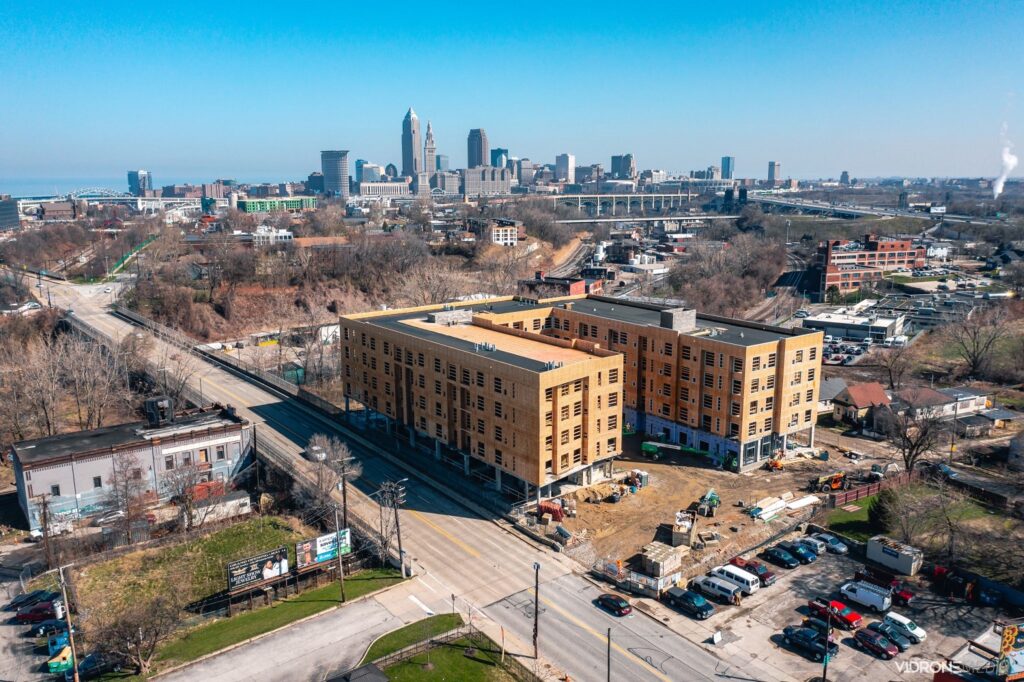
When the Hulett Ore Unloaders were first introduced, they reduced the time to unload Great Lake ships from several days to several hours, thereby allowing a tremendous increase in the production of steel in Cleveland and other manufacturing cities. The economic growth that resulted made Cleveland one of the wealthiest blue-collar cities in the world. Unfortunately, today, funding could not be found to save one Hulett in Cleveland. These were Huletts in action on Whiskey Island in 1948 (Glenn Zahn via the Cleveland Memory Project).
Few other features to be saved, but scattered
Where once there was four Hulett Ore Unloaders, soon there will be none. But at least one of the massive, dinosaur-like machines that revolutionized the steel industry and Great Lakes shipping through high-volume efficiency, now has a chance to survive extinction.
The Port of Cleveland has entered into a contract with Maple Leaf Demolition of Canton to remove the disassembled pieces of two Hulett Ore Unloader machines from the Port’s Cleveland Bulk Terminal (CBT) on Whiskey Island. Site preparation and clearing will commence immediately and removal will occur in April and May.
Four Huletts were originally installed at CBT, then known as the Cleveland & Pittsburgh (C&P) Railroad Ore Dock, in 1912 to unload ore ships. Shut down in 1992, all four were taken down in 1999. Two of the machines were scrapped at the time and two more were set aside on the terminal in pieces. Initially intended for just five years, the Huletts’ stay at CBT stretched into 24 years. The acreage encumbered by the Hulett remnants has been undevelopable for Port purposes during that time.
The two remaining Huletts were not previously removed because they were caught in legal and administrative limbo resulting from a lawsuit brought against the U.S. Army Corps of Engineers (Army Corps), which issued a dredging permit that included disassembly of the Huletts.
That legal action and ensuing administrative process was not concluded until a Memorandum of Agreement was executed in 2018 between the Army Corps, the Port of Cleveland and several interested historic preservation groups. The Memorandum of Agreement gave the preservation interest groups three years to plan and raise the funding for a Hulett display. It also obligated the Port to store the pieces until the end of the three-year period.

Final resting place of one of the Hulett unloaders may be at the Maple Leaf Demolition property on Harrison Avenue in Canton, once part of a Timken Steel plant. A surviving portion of the steel plant is across Harrison, at right. Another Hulett saved from Cleveland’s C&P ore docks will be scrapped (Google).
The Port selected Maple Leaf for the removal because, among other factors evaluated, Maple Leaf intends to make its best efforts to reassemble one Hulett in its entirety on a site the company owns in Canton, port officials said.
“We are very pleased to offer Maple Leaf the opportunity to reassemble one of these machines because we recognize the role they played in Cleveland’s industrial and maritime history,” Dave Gutheil, the Port’s chief commercial officer, said in a written statement. “That said, these machines are massive — more than 800 tons a piece — and it is a major undertaking both financially and technically to safely transport and reassemble one.”
In 1898, George Hulett of Conneaut, Ohio, earned a patent for his invention that replaced the dangerous and slow work of men with shovels unloading iron ore from ships. The upper Great Lakes ore was unloaded by Hulett at six Lake Erie ports including two at Cleveland — the C&P docks and the Erie Railroad’s Riverbed Dock south of Whiskey Island. The ore was then taken by train to inland steel mills, strategically positioned between the converging Mesabi ore and Appalachian coal.
Chance Ayers, owner and president of Maple Leaf, said he was looking forward to taking custody of the Hulett unloader at its property, which was part of Timken Steel’s Harrison Steel Plant on Harrison Avenue on Canton’s southwest side. Maple Leaf is located at 2201 Harrison.
“My company is very excited to be awarded this contract and to have a chance to reinstall one of these historic machines on our site in Canton, which was once used for steelmaking,” Ayer said. “I’m personally passionate about this project and hope others will be pleased too.”
Mera Cardenas, executive director of Canalway Partners, who was spearheading efforts to put up a Hulett display, acknowledged the challenges faced in preserving the Huletts on Cleveland’s waterfront, which was ultimately not feasible.
“While we’re disappointed we weren’t able to secure an interpretive site for the artifacts over the last 25 years, we are pleased at the prospect of a fully erected Hulett nearby,” she said. “The Port has been very collaborative and patient and I am pleased that they have found what appears to be a preservation-minded outcome under the circumstances.”
“The funding that Canalway previously set aside for preservation of the Huletts will now be allocated to our ongoing work of preserving and highlighting Cleveland’s cultural and industrial history through preservation and programming,” Cardenas added.
If Maple Leaf is unable to re-erect the Hulett in its entirety, the Port has contractually obligated the company to set aside a bucket and leg for a period of one year to once again give others time to find a way to use them in a display. Additionally, a shunt engine that was part of the Hulett unloading system will be salvaged and publicly displayed at the American Industrial Mining Museum in Brownsville, PA.
As part of the 2018 Memorandum of Understanding, the Port will return $250,000 to Canalway Partners and disburse $250,000 to the State Historic Preservation Office. This funding is intended to support interpretation of sites within the Ohio & Erie Canalway Heritage Area and the preservation of historical resources about Cleveland’s industrial heritage.
END




